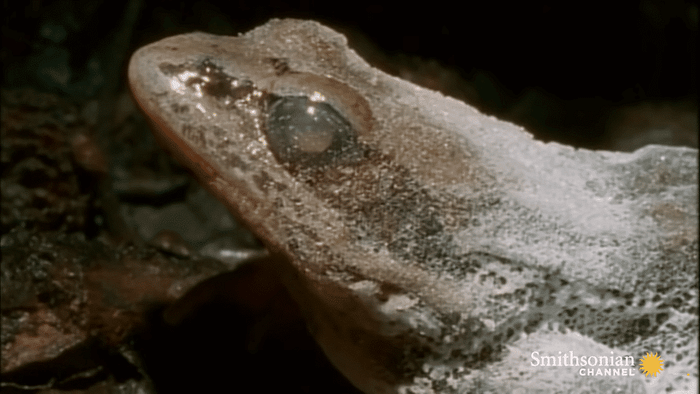The Remarkable Natural Antifreeze Mechanism of the Wood Frog
The wood frog (Rana sylvatica) can remarkably freeze and thaw with the changing seasons. This small, brown amphibian, native to North America, has developed an extraordinary survival mechanism that allows it to endure the harshest winter temperatures, entering a state of suspended animation only to come back to life with the arrival of spring.


The Freezing Phenomenon
As winter approaches and temperatures plummet, the wood frog embarks on a biological transformation that defies the laws of life. Its body, including the blood, begins to freeze and enters a state of suspended animation. The heart ceases to beat, the lungs stop working, and metabolic activity grinds to a near halt. Encased in ice, the frog survives with two-thirds of its body completely frozen, a phenomenon made possible by a unique natural antifreeze produced within its body.
Nature’s Antifreeze
The wood frog’s survival hinges on a delicate balance of water and glucose. As ice forms in the frog’s blood, drawing water out of its cells, the liver responds by producing large amounts of glucose. This sugar, mixing with the stored urine in the blood, creates a homemade antifreeze that prevents the cells from losing too much water. If the cells lost more than 60% of their water, they would succumb to irreversible frostbite.
The Thawing Miracle
After enduring up to eight grueling months in a frozen state, the arrival of spring heralds the wood frog’s resurrection. As temperatures rise, the ice within its body begins to melt. Within 30 minutes, the heart restarts, and blood flows, breathing life back into the once-frozen amphibian. Two days later, fully revived, the wood frog begins its quest for food, a mate, and a much-awaited opportunity to relieve itself.
© Smithsonian Channel YouTube
Fascinating Facts about the Wood Frog
- Survival Instinct: The wood frog can survive in temperatures as low as 3°F, thanks to its natural antifreeze.
- Urine Storage: Unlike most animals, wood frogs store urine in their blood, a crucial component in their antifreeze mixture.
- Suspended Animation: During winter, the wood frog’s vital organs and metabolic activity come to a near stop, a state from which it fully recovers in spring.
- Rapid Revival: The transition from a frozen state to full activity takes two days, showcasing the frog’s remarkable resilience.
Conclusion
The wood frog’s ability to freeze and thaw is a testament to the wonders of evolution and adaptation. In a world where species’ resilience is continually tested by changing climates and environments, the wood frog symbolizes nature’s unyielding ingenuity and the mysteries that still await our discovery in the natural world.
You might also enjoy:
A Father Frog’s Unyielding Courage Against Predatory Wasps
Unleashing a Trypophobia Trigger with the Surinam Toad’s Reproductive Mastery
